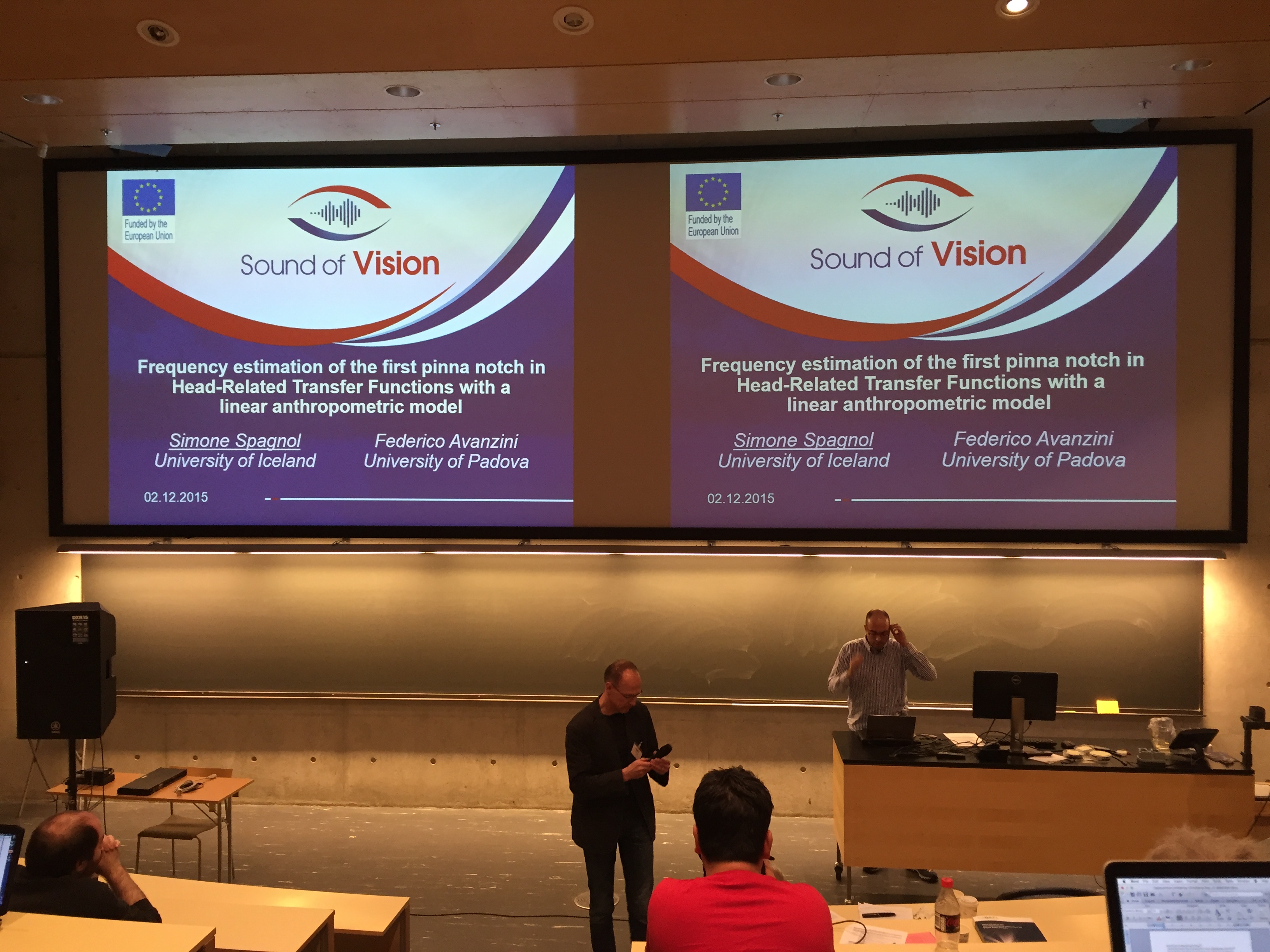
On Wednesday, December 2nd 2015, Dr. Simone Spagnol (University of Iceland) presented two peer-reviewed publications funded by the Sound of Vision project. The presentations took place at the 18th International Conference on Digital Audio Effects (DAFx-15) held in Trondheim, Norway. Approximately 100 researchers attended the conference. Please find details about the two publications below.
Frequency estimation of the first pinna notch in Head-Related Transfer Functions with a linear anthropometric model” (Simone Spagnol, Federico Avanzini)
The relation between anthropometric parameters and Head-Related Transfer Function (HRTF) features, especially those due to the pinna, are not fully understood yet. In this paper we apply signal processing techniques to extract the frequencies of the main pinna notches (known as N1, N2, and N3) in the frontal part of the median plane and build a model relating them to 13 different anthropometric parameters of the pinna, some of which depend on the elevation angle of the sound source. Results show that while the considered anthropometric parameters are not able to approximate with sufficient accuracy neither the N2 nor the N3 frequency, eight of them are sufficient for modeling the frequency of N1 within a psychoacoustically acceptable margin of error. In particular, distances between the ear canal and the outer helix border are the most important parameters for predicting N1.
Relative auditory distance discrimination with virtual nearby sound sources (Simone Spagnol, Erica Tavazzi, Federico Avanzini)
In this paper a psychophysical experiment targeted at exploring relative distance discrimination thresholds with binaurally rendered virtual sound sources in the near field is described. Pairs of virtual sources are spatialized around 6 different spatial locations (2 directions × 3 reference distances) through a set of generic far-field Head-Related Transfer Functions (HRTFs) coupled with a near-field correction model proposed in the literature, known as DVF (Distance Variation Function). Individual discrimination thresholds for each spatial location and for each of the two orders of presentation of stimuli (approaching or receding) are calculated on 20 subjects through an adaptive procedure. Results show that thresholds are higher than those reported in the literature for real sound sources, and that approaching and receding stimuli behave differently. In particular, when the virtual source is close (25 cm) thresholds for the approaching condition are significantly lower compared to thresholds for the receding condition, while the opposite behaviour appears for greater distances (approx. 1 m). We hypothesize such an asymmetric bias to be due to variations in the absolute stimulus level.

